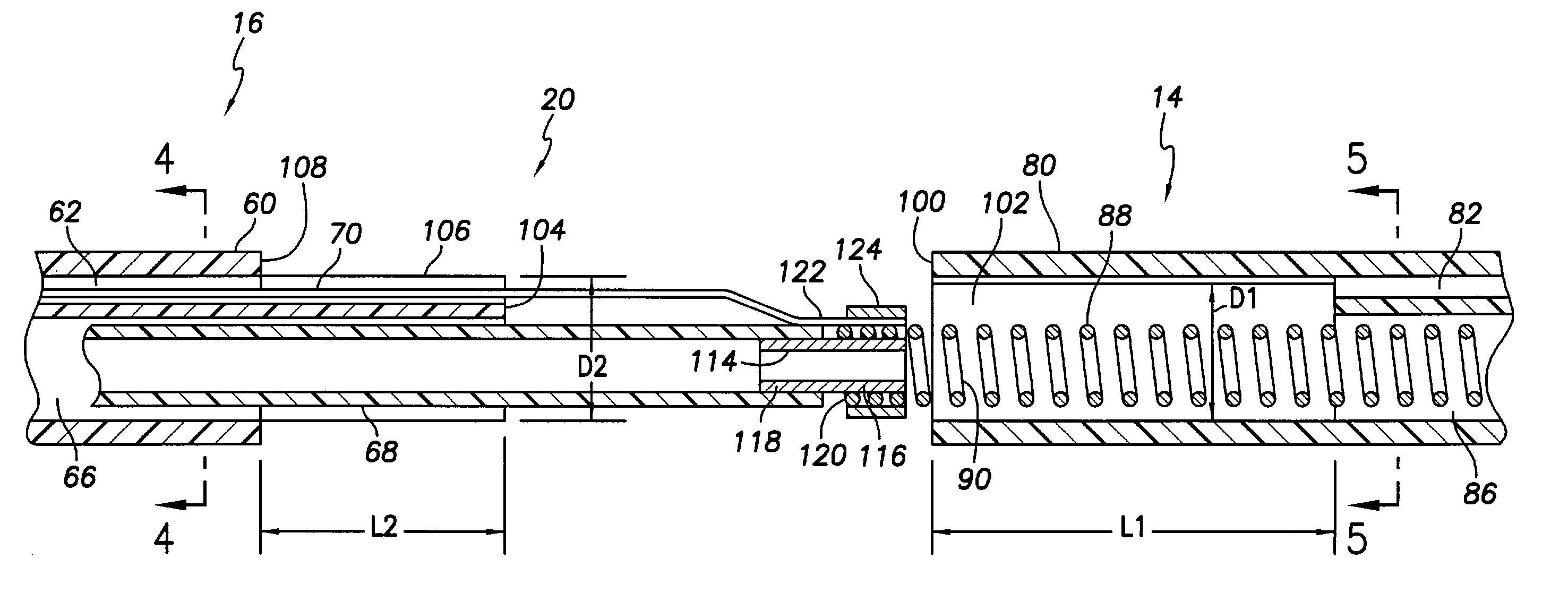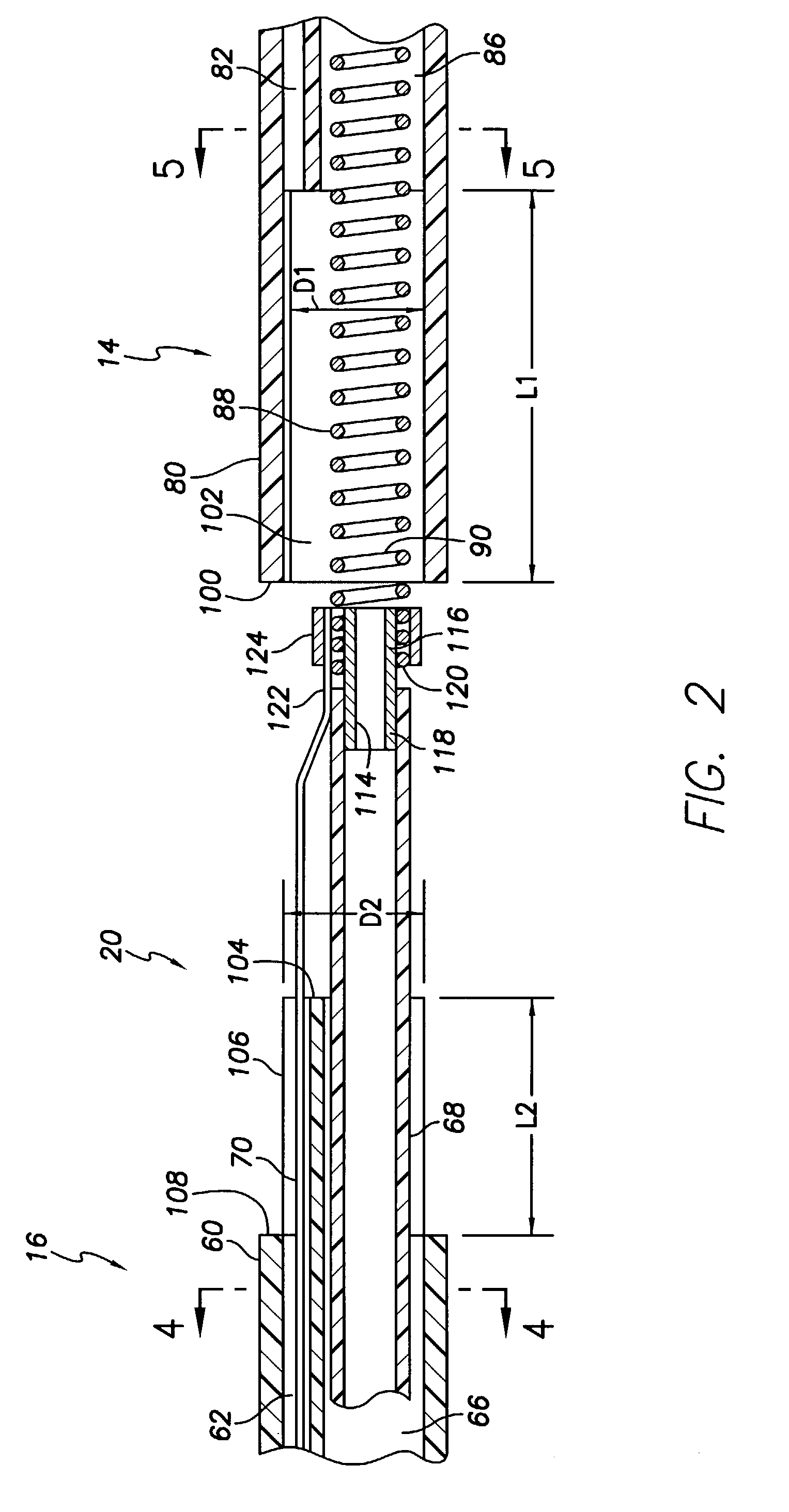Implantable coronary sinus lead and lead system
a technology of implantable leads and coronary sinuses, which is applied in the direction of internal electrodes, transvascular endocardial electrodes, therapy, etc., can solve the problems of inability to facilitate the distal end portion of the coronary sinus region to be positioned and manipulated, and the implantation of a lead in the coronary sinus region is often difficult, and achieves high flexibility.
- Summary
- Abstract
- Description
- Claims
- Application Information
AI Technical Summary
Benefits of technology
Problems solved by technology
Method used
Image
Examples
Embodiment Construction
[0043]The following description presents preferred embodiments of the invention representing the best mode contemplated for practicing the invention. This description is not to be taken in a limiting sense but is made merely for the purpose of describing the general principles of the invention whose scope is defined by the appended claims. Moreover, the context in which the invention is principally shown and described herein, that is, bipolar pacing and sensing leads, is illustrative only; it will be understood by those skilled in the art that the invention has applicability to a wide variety of body implantable lead types, including unipolar and multipolar leads for both pacing and sensing and optionally for providing cardioversion / defibrillation stimuli.
[0044]With reference to FIG. 1, there is shown a bipolar endocardial pacing and sensing lead 10 in accordance with a preferred embodiment of the present invention. The lead 10 includes a lead body 12 comprising a distal portion 14 ...
PUM
 Login to View More
Login to View More Abstract
Description
Claims
Application Information
 Login to View More
Login to View More - R&D
- Intellectual Property
- Life Sciences
- Materials
- Tech Scout
- Unparalleled Data Quality
- Higher Quality Content
- 60% Fewer Hallucinations
Browse by: Latest US Patents, China's latest patents, Technical Efficacy Thesaurus, Application Domain, Technology Topic, Popular Technical Reports.
© 2025 PatSnap. All rights reserved.Legal|Privacy policy|Modern Slavery Act Transparency Statement|Sitemap|About US| Contact US: help@patsnap.com



